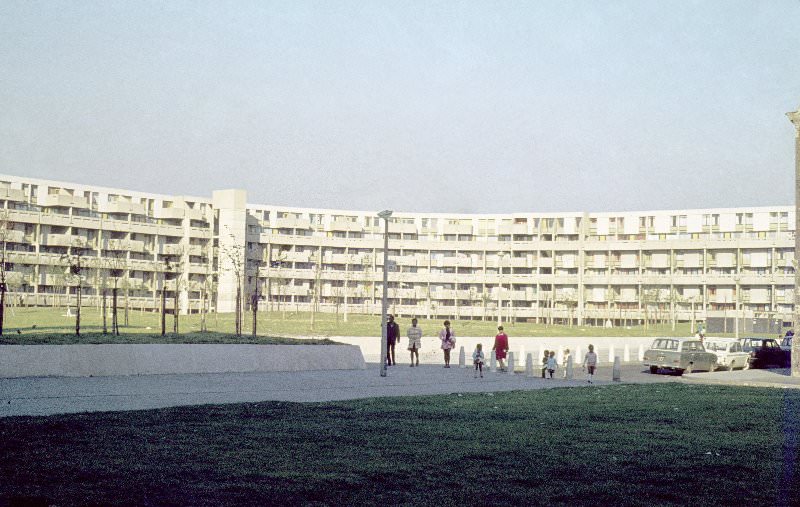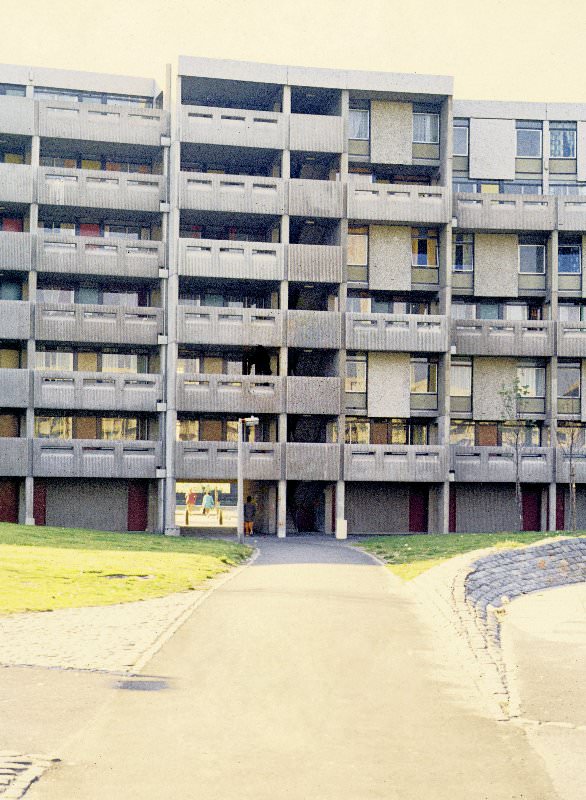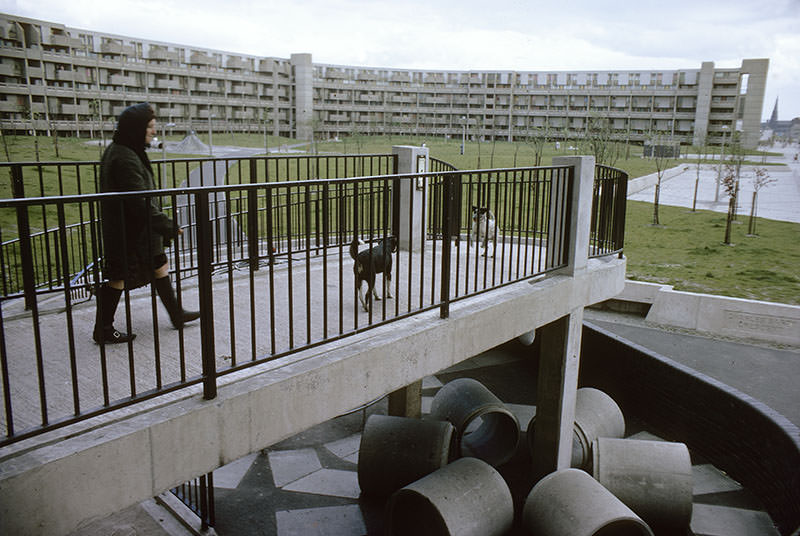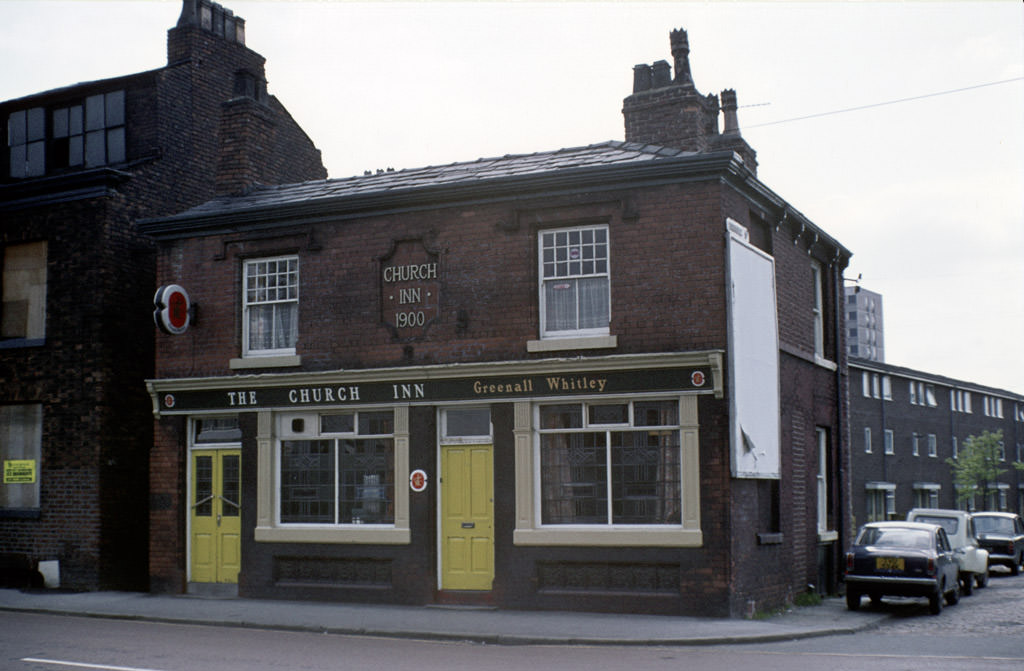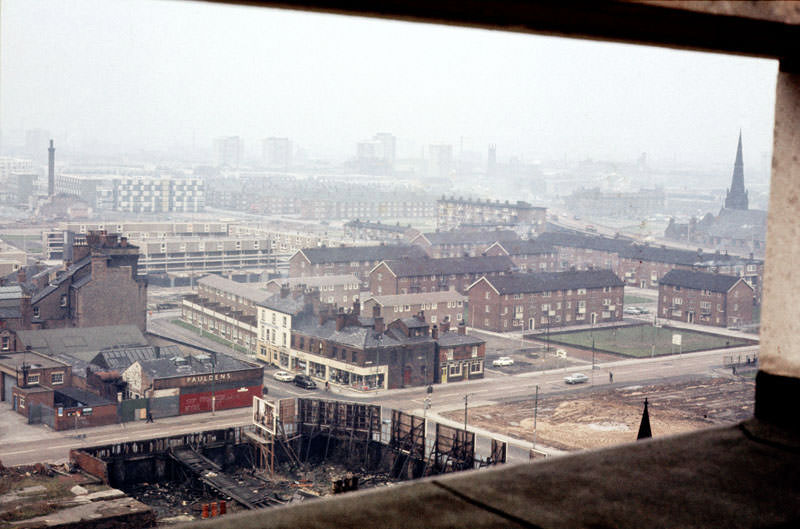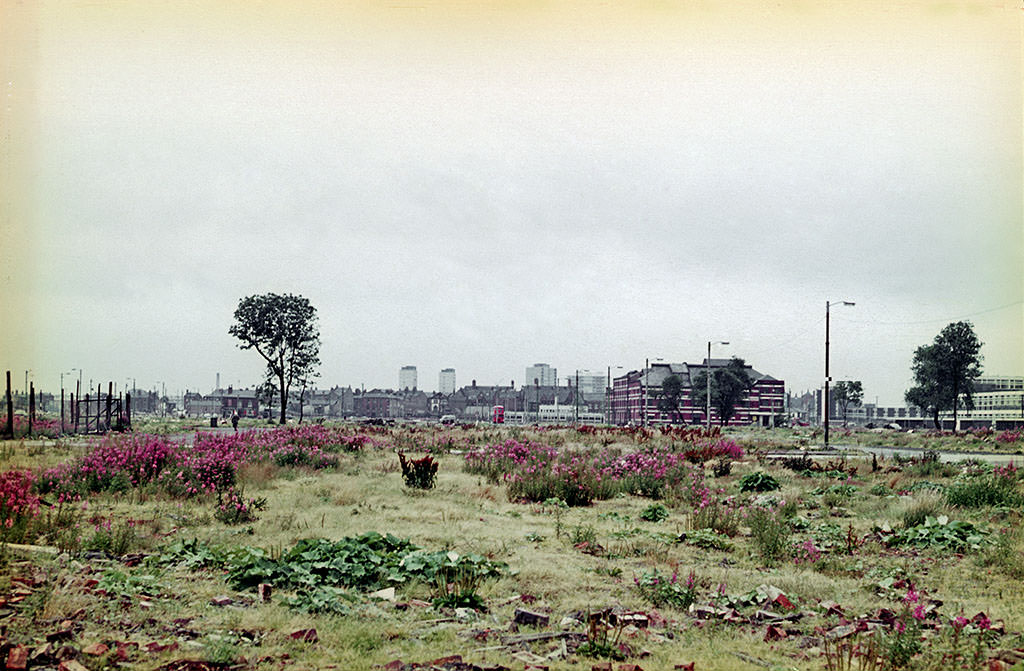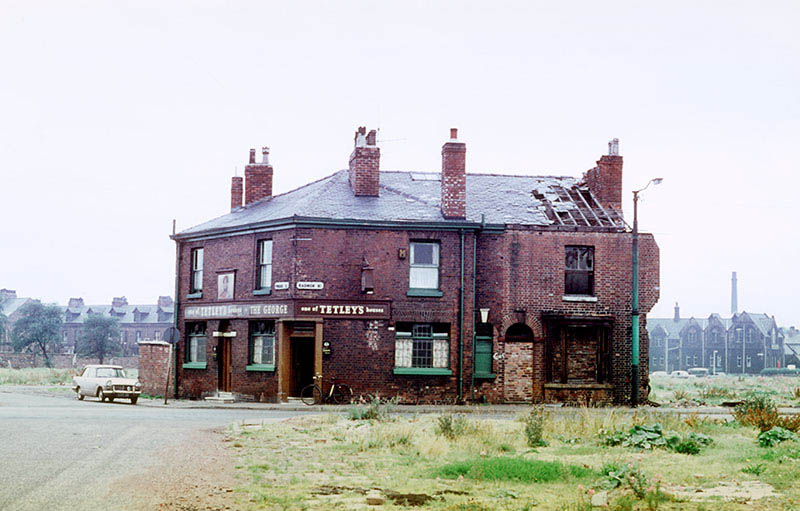Hulme, a district in Manchester, England, went through significant transformations during the 1960s and 1970s. This period marked a notable shift in its landscape, community, and way of life.
The Rise and Fall of Modernist Architecture
In the early 1960s, Hulme saw the rise of modernist architecture with the construction of large housing estates. These estates, like the famous Hulme Crescents, were built with the idea of providing better living conditions. The design was futuristic for its time, featuring deck access apartments which meant that streets were elevated, creating walkways in the sky.
However, these buildings soon faced issues. The design did not account for Manchester’s wet climate, leading to damp problems. Additionally, the lack of communal spaces and the isolation of these high-rises contributed to social issues. By the 1970s, what was meant to be a housing revolution turned into what many considered a planning disaster..
Read more
Community Life
Despite the architectural failings, Hulme was vibrant with community spirit. The area was densely populated, mainly by working-class families, and many residents found a sense of belonging there. Streets and corridors became playgrounds for children, and there was a strong sense of neighborliness. However, this close-knit community also faced challenges like crime and poverty, which were exacerbated by the economic downturns of the 1970s.
Hulme became a hub for counterculture in the 1970s. The area attracted artists, musicians, and those seeking an alternative lifestyle away from mainstream society. Punk music found a home here, and various arts projects began, reflecting the rebellious spirit of the times. The presence of this subculture gave Hulme an edgy reputation, which both fascinated and repelled outsiders.
The 1970s were tough for Britain economically, and Hulme felt this keenly. Industries that many residents relied on for work began to decline or shut down. Unemployment rose, and with it, the quality of life in Hulme deteriorated. The economic hardships led to increased social tensions and a higher crime rate, which further stigmatized the area.
Demolition and Discontent
By the late 1970s, the failure of Hulme’s housing projects was undeniable. The local government started discussing redevelopment. The community faced the prospect of displacement as plans for demolishing the problematic estates were drawn up. This caused unrest among residents, many of whom had mixed feelings about leaving homes that, despite their flaws, were filled with memories.
Public services in Hulme during these decades were basic. There were schools, shops, and pubs, but the infrastructure struggled under the strain of population density and neglect. Roads and public spaces often reflected the neglect, with litter and vandalism becoming commonplace.









